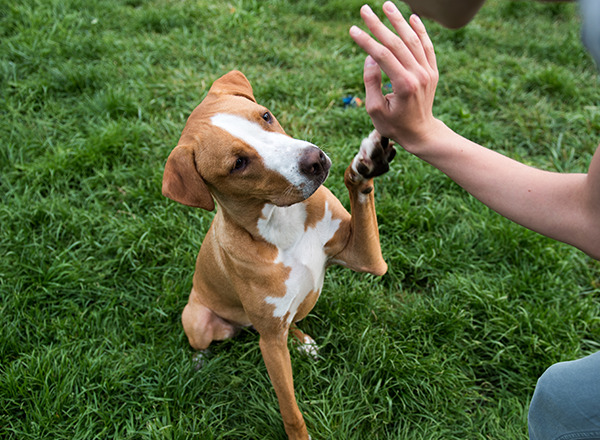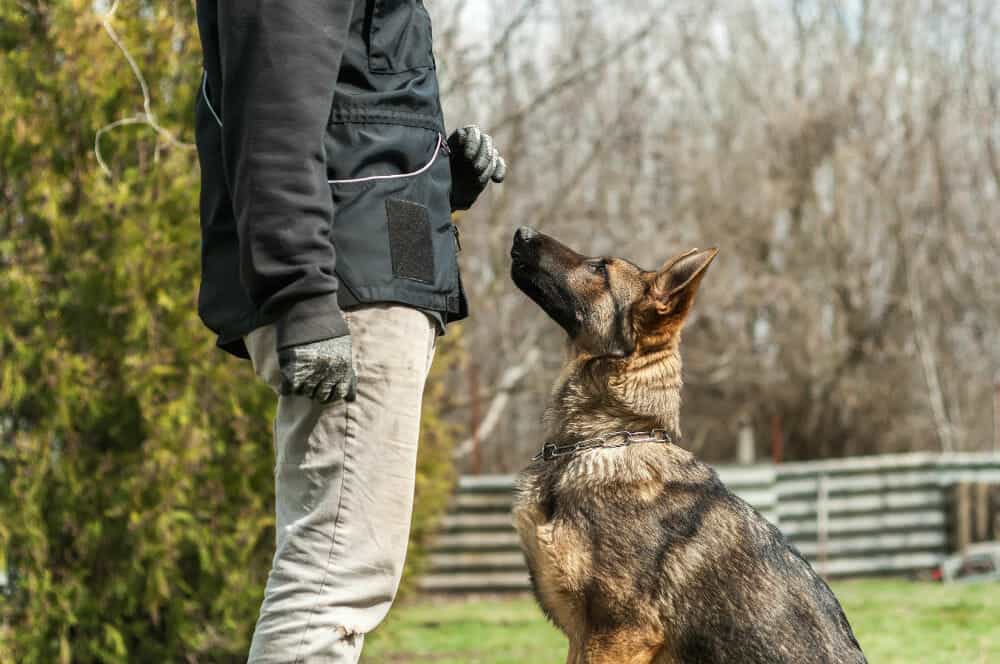Just how to Select the Right Method for Effective Dog Training
Just how to Select the Right Method for Effective Dog Training
Blog Article
Necessary Tips for Successful Dog Training: An Overview for Family Pet Owners
Effective canine training is a complex procedure that needs a tactical method tailored to both the family pet's character and the owner's objectives. Secret parts such as developing regular commands, utilizing favorable reinforcement, and promoting early socializing play crucial functions in cultivating a well-adjusted canine friend. Several family pet proprietors run into difficulties that can prevent progression, leading to disappointment and uncertainty. Comprehending how to navigate these barriers can dramatically enhance the training experience, inevitably changing the partnership in between owner and pet dog. What are the essential approaches that can be utilized to make certain success in this endeavor?
Understanding Dog Behavior
Recognizing pet dog behavior is necessary for effective training and cultivating an unified connection between pooches and their proprietors. dog training. Canines connect largely via body language, articulations, and activities, making it important for owners to analyze these signals precisely.

Socializing plays a considerable role in canine habits; direct exposure to numerous environments, people, and other animals can considerably affect a pet dog's temperament. Variables such as type characteristics and private character need to lead training methods, as some breeds may have specific behavior qualities that require tailored methods. By recognizing these components, owners can create a helpful environment that motivates favorable actions, bring about successful training outcomes and a much deeper bond with their pet dogs.
Establishing Regular Commands
Efficient communication with your pet starts with establishing constant commands. This foundational component of training is critical for cultivating understanding in between you and your family pet. Consistency in the commands you use ensures that your canine can reliably associate specific words or phrases with the preferred actions.
When picking commands, pick clear, unique words that are very easy to state and distinguish from each other. Avoid making use of similar-sounding commands that may perplex your pet. Utilizing "sit" and "remain" is appropriate, but "rest" and "hit" could lead to misunderstandings.
In addition, preserve the same tone and quantity for each command. Dogs are sensitive to vocal signs, so varying your tone can produce confusion.
It is similarly vital to guarantee that all family members are on the very same web page pertaining to the commands made use of. A united front in command usage will stop blended signals and reinforce the understanding process.
Favorable Reinforcement Strategies
The power of favorable reinforcement in pet dog training depends on its ability to urge preferred habits through incentives and appreciation. This technique is grounded in the principle that habits complied with by desirable outcomes are most likely to be duplicated. By including positive support right into your training routine, you can effectively shape your dog's behavior in a positive way.
To implement favorable support, it's vital to recognize what inspires your canine, whether it be treats, playthings, or spoken praise. When your pet does a desired action, such as remaining on command, promptly reward them with a treat or affection. This association between the command and the positive end result Go Here enhances their understanding.
It's vital to timing the benefits correctly; providing the reinforcement within seconds of the preferred behavior helps your canine make the connection (dog training). Additionally, uniformity is crucial-- make sure that all household members utilize the very same commands and incentive systems to avoid confusion

Slowly, you can minimize the frequency of deals with as your pet dog finds out the behavior, transitioning to praise or periodic rewards. This method not only promotes a strong bond between you and your canine yet likewise promotes a positive understanding environment, making training a pleasurable experience for both.
Socialization and Interaction
Regularly subjecting your pet dog to a selection of settings, individuals, and other pets is crucial for their social advancement. Socialization needs to start early, ideally during the critical window of 3 to 14 weeks, when pups are most responsive to brand-new experiences. However, older canines can likewise gain from recurring socializing initiatives.
Introduce your pet dog to different settings, such as parks, pet-friendly stores, and metropolitan locations. This exposure assists them adapt to numerous stimulations, decreasing anxiousness and fear feedbacks. Encourage positive interactions with other canines and people, making certain that these encounters are safe and regulated to foster confidence.
Make use of structured playdates with courteous pets, as this can improve your pet's social abilities and show them ideal behavior. Obedience courses and training sessions likewise give outstanding possibilities for socialization, enabling your pet to connect with others in a monitored environment.
Screen your canine's body language during communications, as this will help you gauge their comfort level. Gradually enhance exposure to even more difficult situations while making certain that each experience is positive. A well-socialized pet is most likely to display well balanced habits, making them a joy to have in any type of setting.
Attending To Common Training Obstacles
Every pet proprietor will certainly come across training challenges at some point, no matter of their canine's age or socialization level. Determining common issues such as stubbornness, distractions, and fearfulness can aid in creating effective approaches for renovation.

Slowly introduce interruptions as the pet ends up being a lot more skillful in commands. Short, frequent training sessions are likewise reliable in maintaining attention.
Fearfulness can prevent a dog's understanding procedure. Gradual desensitization to the source of worry, coupled with positive reinforcement, can aid ease anxiety. Perseverance is critical; never ever force a canine right into a circumstance that causes distress, as this might intensify the issue.
Eventually, understanding and resolving these usual obstacles with an organized method will certainly cultivate a much more efficient training experience, strengthening the bond between canine and owner while advertising effective understanding.
Verdict
In summary, successful canine training counts on an extensive understanding of canine behavior, the establishment More Bonuses of regular commands, and the application of positive support methods. Socializing plays a critical duty in developing well-adjusted pets, while attending to usual training difficulties needs patience and flexibility. By carrying out these necessary methods, pet dog owners can cultivate a solid bond with their pets and advertise desirable actions, inevitably resulting in a harmonious relationship in between human beings and their check that canine friends.
Recognizing canine actions is necessary for reliable training and promoting a harmonious partnership between dogs and their proprietors.Socializing plays a substantial duty in dog habits; direct exposure to numerous settings, individuals, and various other animals can significantly influence a pet dog's character.The power of favorable reinforcement in pet training exists in its capacity to encourage wanted behaviors via incentives and appreciation. By incorporating favorable support into your training routine, you can efficiently form your canine's actions in a useful manner.
In recap, successful pet dog training relies on a detailed understanding of canine actions, the establishment of regular commands, and the application of positive reinforcement methods.
Report this page